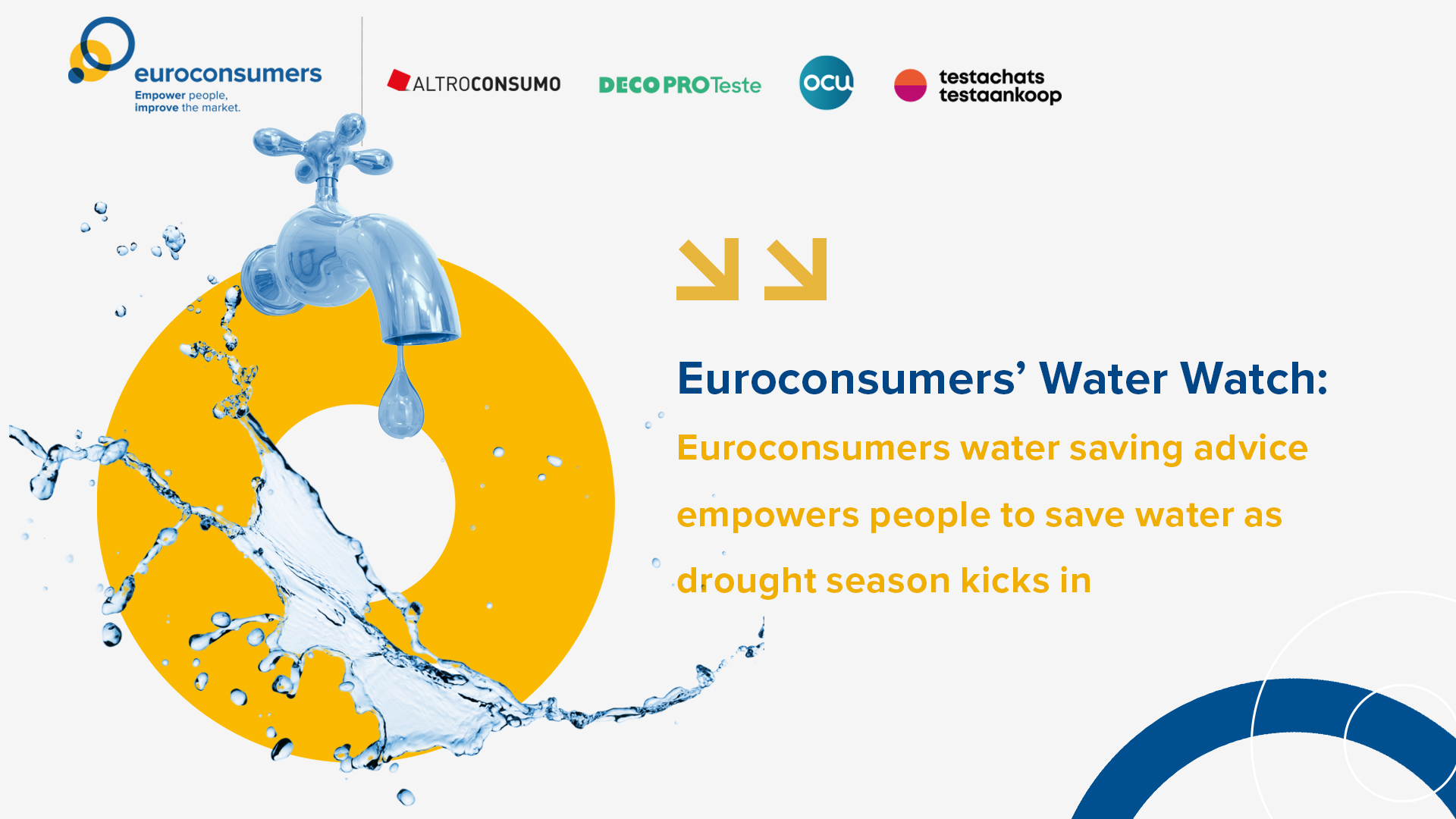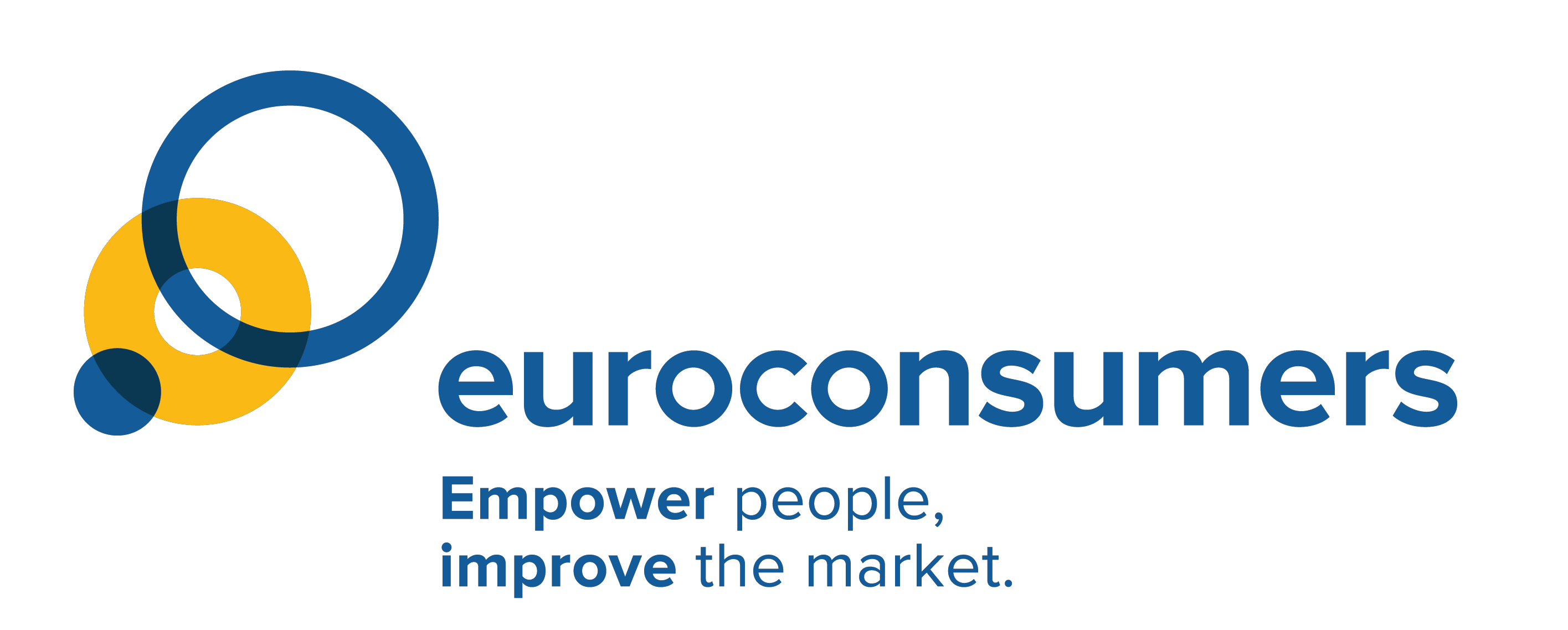Euroconsumers advice empowers people to save water as drought season kicks in

As the parliament debates how prepared the EU is for wildfire and drought season, Euroconsumers kicks off Water Watch, a series of articles all about water, starting with why and how consumers can help conserve it.
Saving water as drought cycles intensify
Saving water is becoming more and more important as Europe experiences drought cycles on a more regular basis.
In Portugal last year, 31% of its mainland territory experienced severe drought, and the Mediterranean including Spain and Italy has been affected by severe and prolonged droughts over the last two years.
National and European-wide measures such as those debated today are vital for the safety and health of people and the planet but we can also empower consumers to start saving water at home.
And consumers want to play their part. Alongside energy, water is the top sector where consumers are really keen for advice on actions that will cut down on their usage.
Data from Euroconsumers consumer surveys reveal that 58% of consumers want more information and 67% ask for concrete tools, tips and tricks.
Household water savings: tried and tested advice
Our members in Italy, Spain and Portugal are on hand to deliver that advice backed by science and independent testing:
Zero spend water savings tips
DECO Proteste, Altroconsumo and OCU shared ways to save water at home without even investing in any new devices or equipment, for example halving the time you spend in the shower, or using eco cycles on washing machines and dishwashers. These small changes would make a big impact:
- o A simple switch from the default dishwasher cycle to the eco setting would save 4 litres per wash, adding up to 15,000 litres of water per year per family.
- o Swapping a long bath for a quick shower could drastically cut down up to three quarters of water – and you’ll be just as clean!
Know your water hotspots
Altroconsumo found consumers in Italy use an average of 280 litres of water a day, that’s spread across food preparation, laundry, showering and toilet and general housekeeping. They broke down where the majority of water is used in Italian homes and found:
- o Toilets are responsible for 20% of water consumption in the house – and that is potable (or drinkable) water
- o A regular showerhead will use about 120 litres of water in a 10 minute shower
- o A dripping tap will waste about 1500 litres of water per year – that’s the equivalent of 10 whole bath tubs going down the drain…
Spain’s national office for statistics put the figure at 133 litres per day per person, with just 2 litres of that used for drinking. As there’s a lot going on behind the averages, getting to know usage patterns will really help with deciding what changes to make.
OCU and Altroconsumo have created water calculators to let consumers know how much water they’re using based on the family size and everyone’s dishwashing, laundry, gardening and washing habits. This is followed by some easy actions they can take to cut down their water usage.
Small investments for big savings
Empowering consumers with information about how and where water is used in their homes lets them make better decisions about buying water-saving devices. Last summer, DECO PROteste tested a range of these devices, and found:
- o Shower: installing a new efficient shower head or a ‘flow reducer’ to an existing shower head will save water and still keep the shower at a comfortable flow.
- o Kitchen: similar to the shower head device, options are available to reduce the flow of tap water in the kitchen, cutting down on any potential unnecessary waste.
- o Toilet: if you don’t have a dual flush system, then adding a simple universal system to your toilet will halve the amount of water used, saving around 14,000 litres of water per year based on a family of three. It’s also possible to install a toilet flush delay device which delays the opening of the flush mechanism after it has been activated. Both options ensure the minimum amount of water is used per flush.
Low cost devices can reduce water use and water bills
All together, DECO PROteste estimated that switching to these devices would slash the 280 litres of water used per day without them down to just 100 litres per day – a saving of 180 litres per day. For a family of three that means reducing water use by 139,000 litres each year.
When it comes to how much it would cost to save that much water, the Portuguese consumer organisation estimates a pretty affordable 72 euros. And depending on tariffs, this cost could be quickly offset against bills.
Product tests by OCU in Spain had similarly strong results, estimating that water use could be halved with the right devices and some new habits. This would deliver savings of 110,000 liters per year for a three person household, which translates into 200 euros off water bills each year.
To help consumers make sure they were choosing exactly the right product for them, the product test results were accompanied by detailed advice on testing water pressure, flow and even the threads of taps and shower heads.
Water is everyone’s responsibility
These tools and recommendations from Euroconsumers members show how consumers can do their bit to save water but it is not all on them – household savings will not be enough to transition to the secure, sustainable water system we need.
Don’t forget, domestic water use is just a fraction of that used by sectors like agriculture.
According to MITECO Spain’s centre for environmental data, 81% of the world’s available fresh water supply used in agriculture vs 16% used for urban/domestic supply.
Industry, policy and enforcement tasks
So while consumers can make savings, bigger scale, joined up action from policy makers, enforcement authorities and industry must be a priority.
Sustainable water management needs authorities to invest in infrastructure improvements and design long term water management plans.
Producers can be much more transparent about how much water is used in production processes.
A new outfit of jeans and t-shirt would have used over 10,000 litres of water in production – up to 2,500 litres is needed for a t-shirt plus 8,000 litres per pair of jeans. And our weekly food shop also has a high water cost – with around 15,000 litres required to produce a kilo of meat.
Labels to show the water footprint of products, backed by verifiable data could guide consumers to making empowered decisions about what to buy.
Euroconsumers and its members will continue to empower consumers to make the changes they want to, but the burden can’t all be on them. We will be pushing hard for the structural changes needed to improve the water market.

